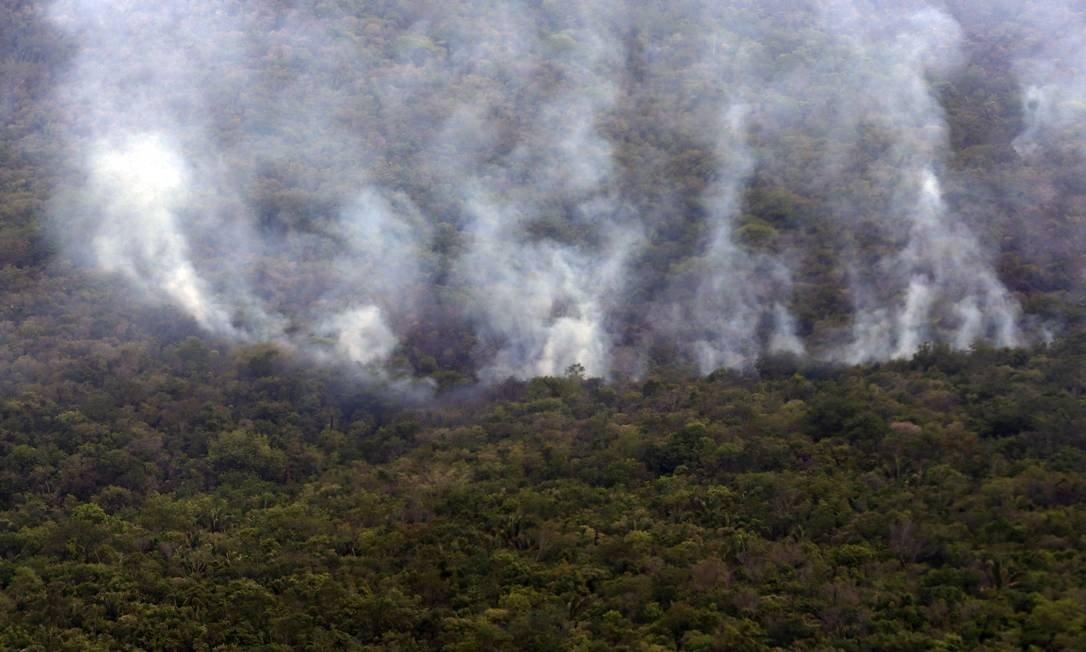RIO DE JANEIRO, BRAZIL – Forest fires in 2019 and 2020, added to the growth of the agricultural frontier, caused the Plurinational State to rise from sixth to fourth place in the world. Consulted by Sputnik, specialists in the subject demanded protection measures from the national government.
The large fires that affected the east in 2019 and 2020 helped position Bolivia as the world country that cuts down the fourth- most hectares of trees per capita. Together with the growth of the agricultural frontier, this factor paints a bleak picture for indigenous communities that are forced to move to the cities in the face of the carbonization of forest resources, from which they used to derive their livelihoods.
Read also: Check out our coverage on Bolivia
Bolivia currently has 11.5 million inhabitants. According to Global Forest Watch, a civil society organization, in 2020, the Plurinational State lost 430,000 hectares of forest, mainly in its Amazon region.

According to this report, from 2001 to 2020, Bolivia lost 6.11 million hectares of tree cover, representing 9.5% of the total.
“It is worrying, even more so, when we see that at COP 26 countries have signed an agreement to avoid deforestation and Bolivia is one of the countries that did not sign,” the renowned biologist Vincent Vos, who knows the Bolivian Amazon exhaustively, told Sputnik.
Bolivia climbed from sixth to fourth place in ranking the world’s most prominent loggers. This rise was partly due to fires in 2019 when 1.5 million hectares of forest were burned; and in 2020, when 600,000 hectares were consumed.
“The new social, economic development plan continues to talk about expanding the agricultural frontier, which is the direct cause of all the environmental disasters we have seen,” considered Vos.
According to Vos, cutting down forests to introduce crops “is a matter of concern from every point of view, because neither economically nor socially is it a wise policy, although some actors present it as a successful model.”
In this regard, the biologist explained that “when we look at the development indexes, they are not good in the agricultural frontier zones. There are many social problems, including migration of the local population, which flees these areas.
In their territories, indigenous families do not need money to live. They hunt, fish, gather other foods from the forest, and have their fields grow different vegetables. But when they migrate to the cities, they have no options for economic sustenance.”
Thus “they end up in the poverty rings of the city of Santa Cruz, for example, because in their territories they can no longer live from their traditional activities, such as hunting, fishing and the exploitation of forest resources,” said Vos, who was born in Holland and for the last two decades has lived in Riberalta, in the Amazonian department of Beni, where he raised his family.
The failures to prevent deforestation in the east are seen in the national government. “If one analyzes the other levels of government, such as departmental and municipal, no one applies the PTDIs (Territorial Plans for Integral Development for Living Well). So I think it is a shared responsibility because we are failing as Bolivian society,” Vos assessed.
A COCKTAIL OF AGRIBUSINESS AND CLIMATE CHANGE
Rodrigo Meruvia is an environmental engineer and coordinator of the Gaia Pacha Foundation. He considered that the deforestation in Bolivia “is regrettable, but it is also congruent with what has happened in 2019 and 2020. This 2021 has not been the exception, with fires caused by policies that promote agribusiness. On the other hand, there is climate change because we have much longer dry seasons,” he told Sputnik.
For Meruvia, the lack of education and awareness among the population also damages ecosystems. The unbridled power of agribusiness makes it challenging to protect forests. “It is one of the main sectors of the lowlands because they have a strong activity, also with strong economic movement,” said Meruvia.
Gaia Pacha has been working for 15 years on forest and ecosystem restoration in Bolivia. It also carries out research and information to prevent fires and uncontrolled logging.
Meruvia observed that “we have had an increasingly discouraging change in forests and protected areas” in these years of work.
For him, many territorial areas should be protected, but this is made impossible by agroindustrial and real estate interests, manifested in the growth of urban sprawl in all the country’s cities.
“There is constant pressure on ecosystems. In these territories, forest fires are the order of the day. Added to this, climate change and the lack of rainfall also affect the ecosystems, which makes them more vulnerable,” said Meruvia.
LACK OF CLIMATE POLICIES
For Vos, “there is no climate policy”. He affirmed that financing would come from abroad to protect the environment. Still, this money “will be managed by the IDB (Inter-American Development Bank) with businessmen who are not even Bolivian, but only international.”
Vos explained that the Bolivian Amazon is affected to different degrees. According to the Constitution, this territory includes only the department of Pando and the provinces of Ballivián and Vaca Díez, in Beni; and Iturralde, in the north of La Paz.
Cobija [capital of Pando] is of concern because Brazilian cattle ranching has already made a strong entrance. According to the biologist, deforestation in this area “is still relatively low. There are degraded areas, but in general terms, there are still many forests.”
However, “the sugar mill that has been built in San Buenaventura, in the north of La Paz; the rice fields in the south of Beni, the cattle ranching in Chiquitanía (Santa Cruz) belong to the Amazon basin. If we look at it on this scale, things are much more worrying.”
In these regions, “although the forests are still standing, there is a worrying rate of degradation, because they have extracted wood, they have opened roads, the people make their chaquito [cultivation field], and the cattle ranchers come in. As a result, there are fires.”

